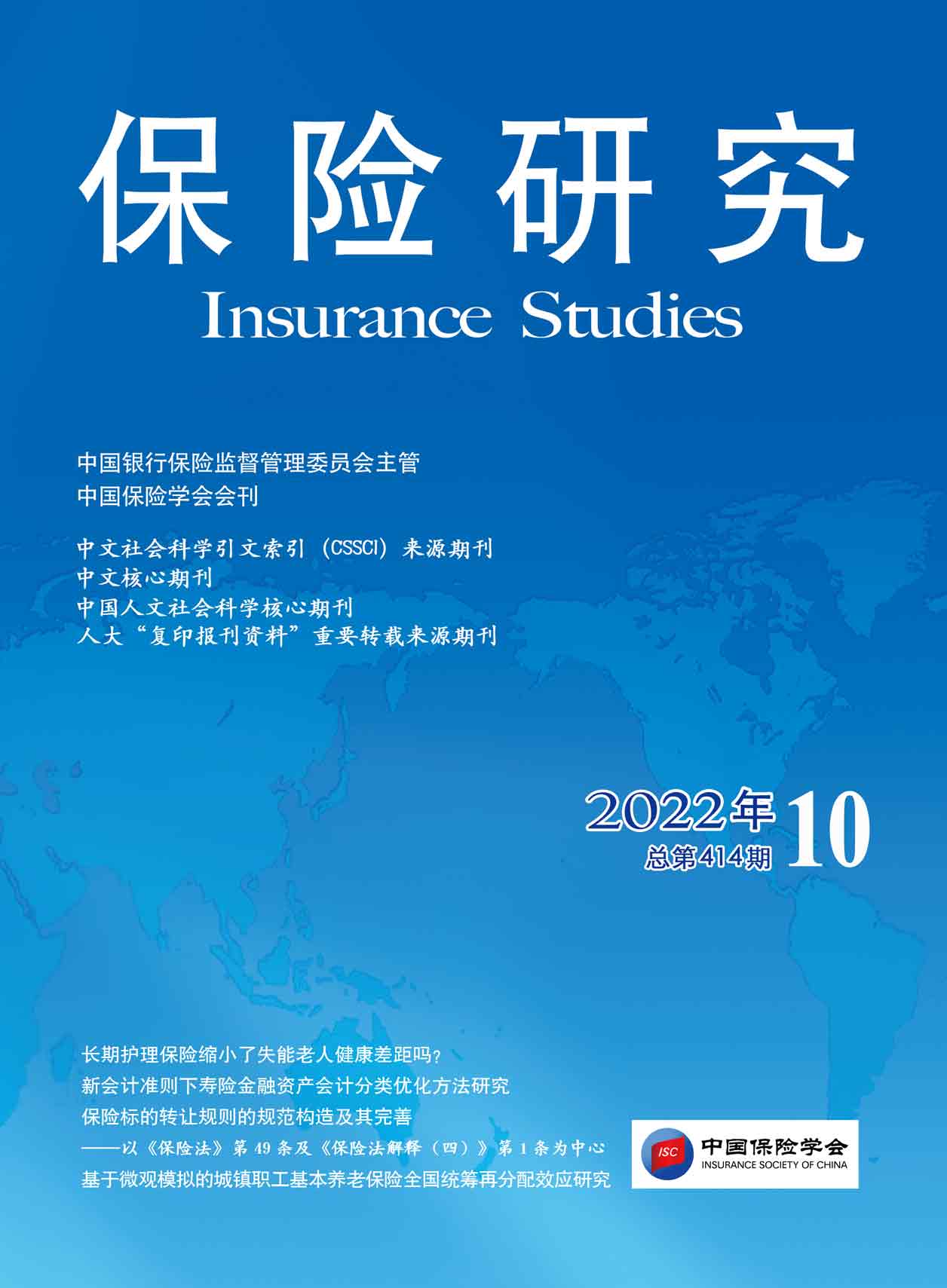
《保险研究》20221004-《多维地震风险模型与保险基金测算》(李政宵、刘新红、孟生旺)
[中图分类号]F842.64;F222.3[文献标识码]A[文章编号]1004-3306(2022)10-0045-16 DOI:10.13497/j.cnki.is.2022.10.004
资源价格:30积分
- 内容介绍
[摘 要]本文选取我国大陆地区1990~2019年的地震灾害数据为研究样本,以地震造成的直接经济损失、死亡人数和受伤人数三个维度为研究对象,建立了复杂数据结构下的多维地震风险模型。在不同期限结构和不同偿付水平下,运用蒙特卡洛模拟算法测算了我国地震保险基金的风险规模和保费水平。与传统的巨灾精算模型相比,多维地震风险模型不仅解决了连续型、离散型和半连续型数据的联合建模问题,还能够更好地刻画多维地震风险之间非对称的相依结构。实际分析表明,在巨灾风险度量中考虑复杂的相依结构能够更好地分散地震的尾部风险,有效地减少政府的财政负担,提高地震保险的风险覆盖水平,为完善我国地震巨灾保险制度提供理论支撑。
[关键词]多维地震风险;藤Copula;半连续数据;蒙特卡洛模拟;地震保险基金
[基金项目]本文获国家自然科学基金项目“复杂数据结构下的巨灾保险定价模型及其应用研究”(71901064)、“对外经济贸易大学优秀青年学者”项目(20YQ16)、对外经济贸易大学中央高校基本科研业务费专项资金项目(CXTD13-02)、北京市教育委员会科技计划一般项目(KM202010017001 和KM201910017002)、国家社科基金重点项目“巨灾债券定价与风险管理的统计建模研究”(22ATJ005)资助。
[作者简介]李政宵,对外经济贸易大学保险学院统计与精算系副教授,经济学博士;刘新红(通讯作者),北京石油化工学院致远学院副教授,经济学博士;孟生旺,中国人民大学应用统计科学研究中心研究员,中国人民大学统计学院教授。
Multivariate Modeling for Earthquake Risks and Earthquake Insurance Fund Projection
LI Zheng-xiao,LIU Xin-hong,MENG Sheng-wang
Abstract:Using the earthquake damages during 1990-2019 in China as the sample,the paper established a multivariate earthquake risk model with a complex statistic structure,aiming to study direct losses,casualties,and number of injured people caused by earthquakes.The Monte Carlo simulation is used to calculate the Value-at-Risk (VaR) of the earthquake insurance fund,along with the premiums based on different duration structures and solvency levels.In comparison with the traditional actuarial models for catastrophes,the multivariate earthquake risk model not only solves the problems of correlated modelling for continuous,discrete and semi-continuous data,but also better characterizes the complex interdependence structure among multi-dimensional catastrophe risks.The empirical result shows that the tail risk can be dispersed by introducing the dependence structure in the earthquake risk model,thus effectively reducing government’s fiscal burdens and increasing insurance coverage.It also provides theoretical support for improving the earthquake insurance system.
Key words:multi-dimension earthquake risks;Vine Copula;semi-continuous data;Monte Carlo Simulation;earthquake insurance fund
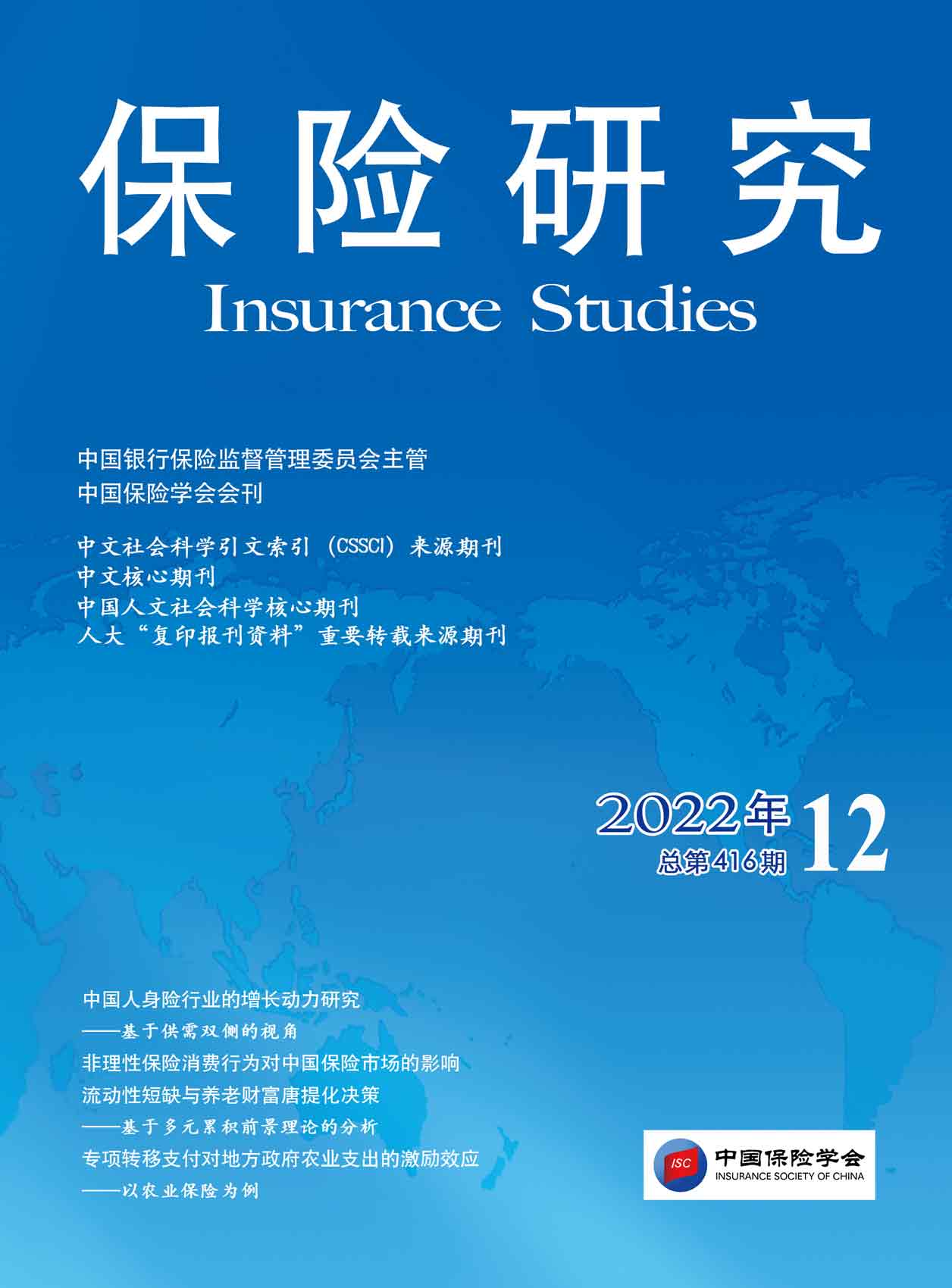
《保险研究》20221201-《中国人身险行业的增长动力研究——基于供需双侧的视角》(杨斐滟、何薇、陈滔)
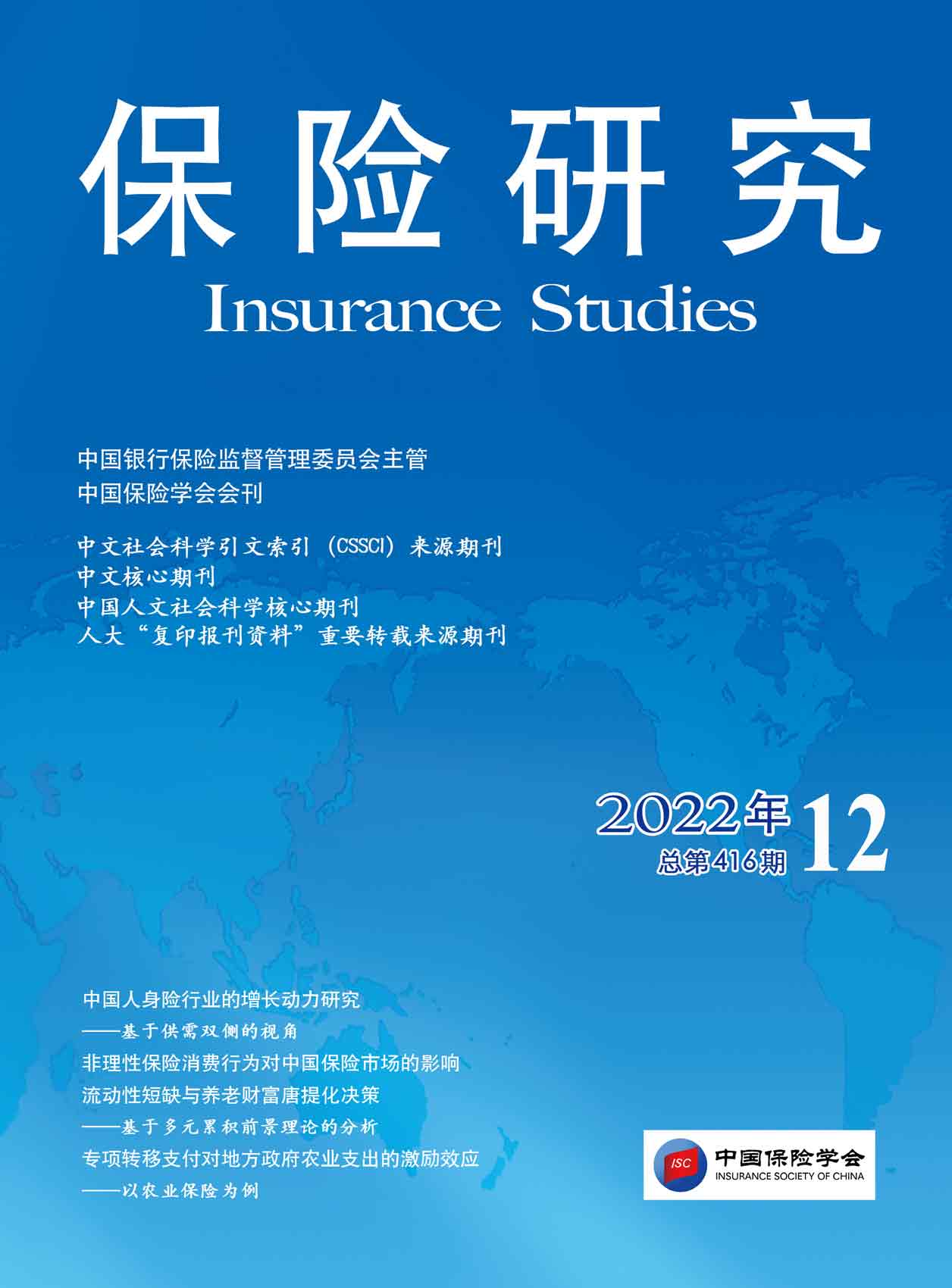
《保险研究》20221202-《非理性保险消费行为对中国保险市场的影响》(郭振华、朱少杰)
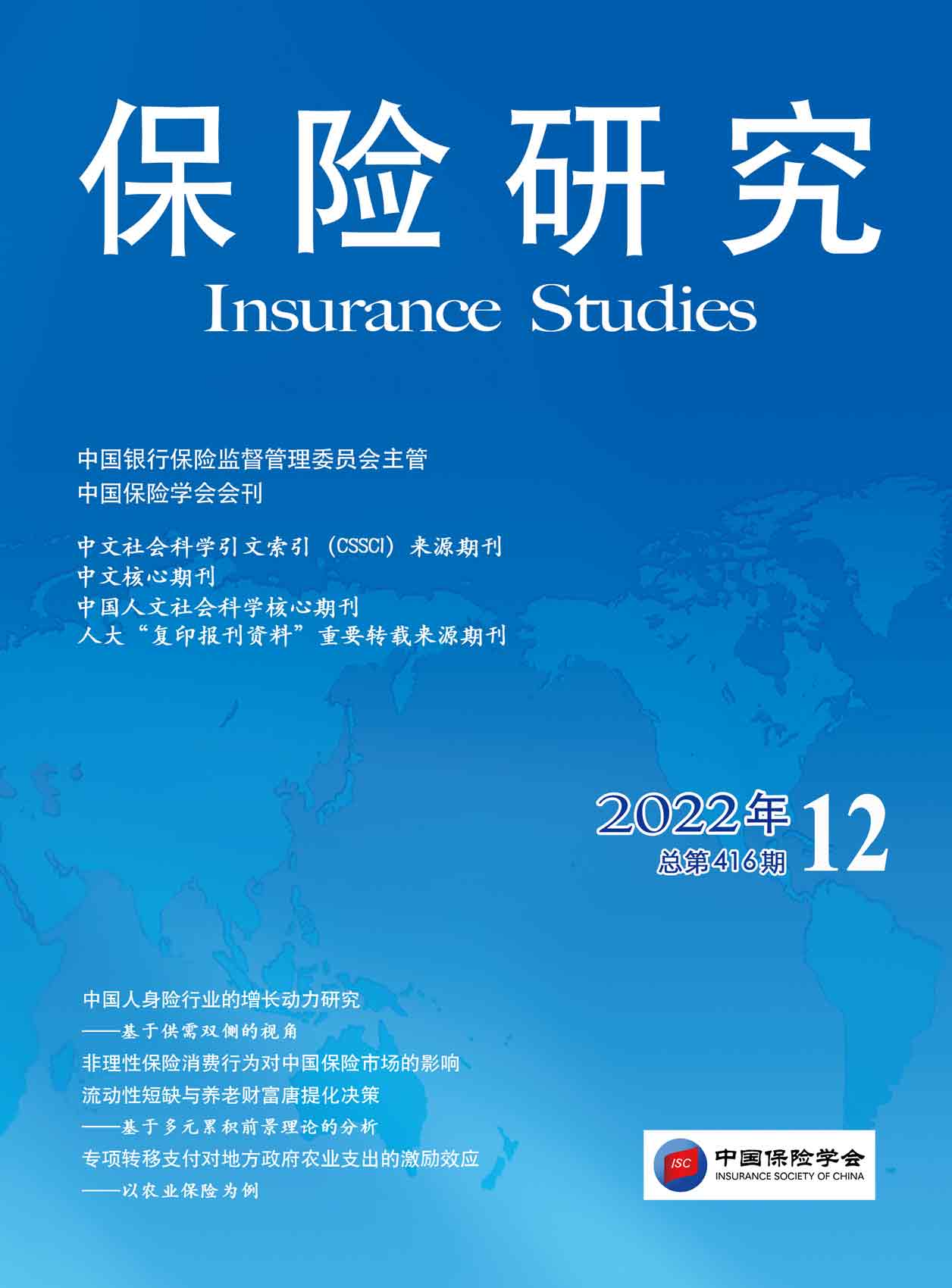
《保险研究》20221203-《流动性短缺与养老财富唐提化决策——基于多元累积前景理论的分析》(王力平、隋杰)
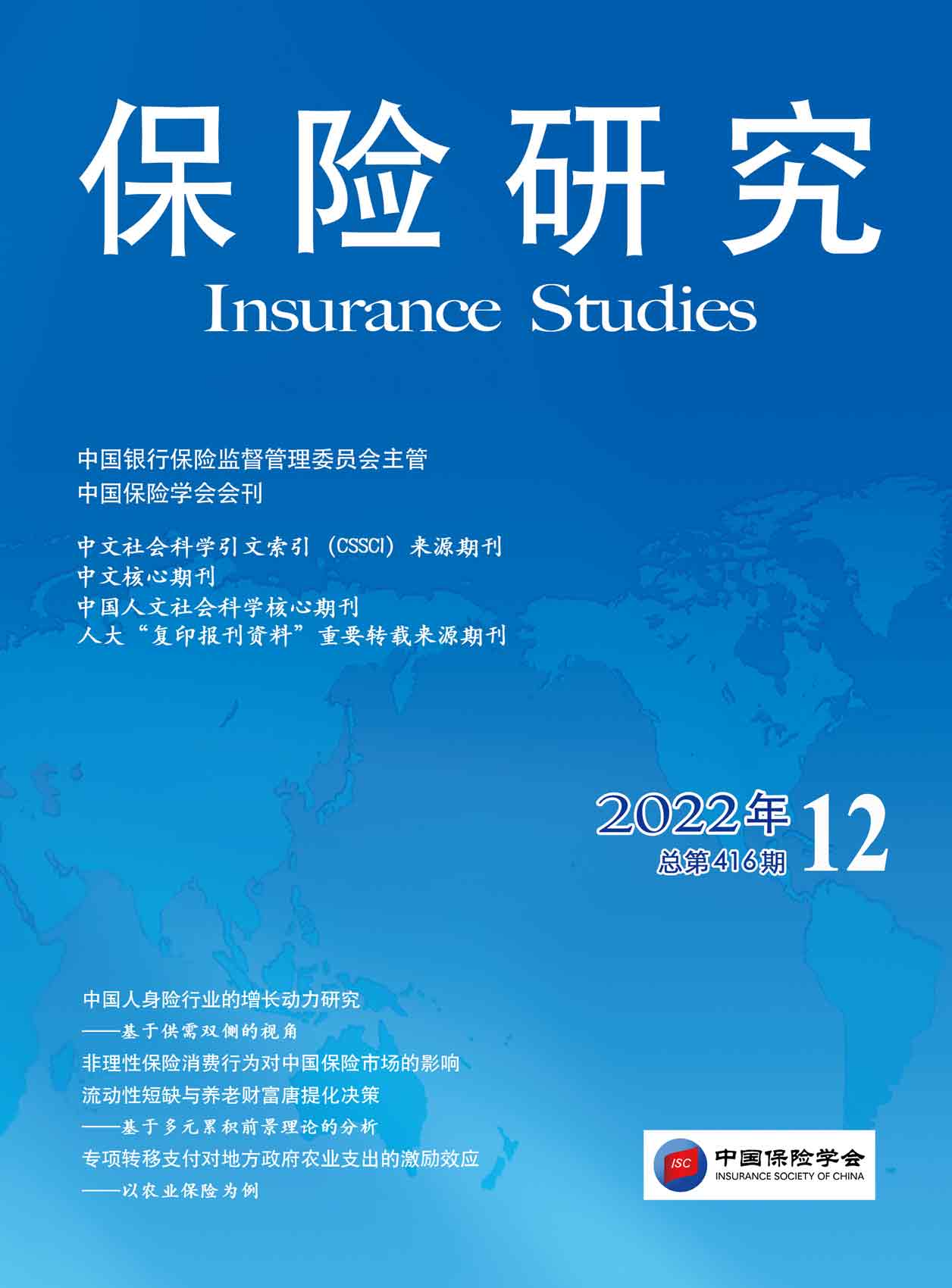
《保险研究》20221204-《专项转移支付对地方政府农业支出的激励效应——以农业保险为例》(何小伟、曹杨、刘怡鑫)
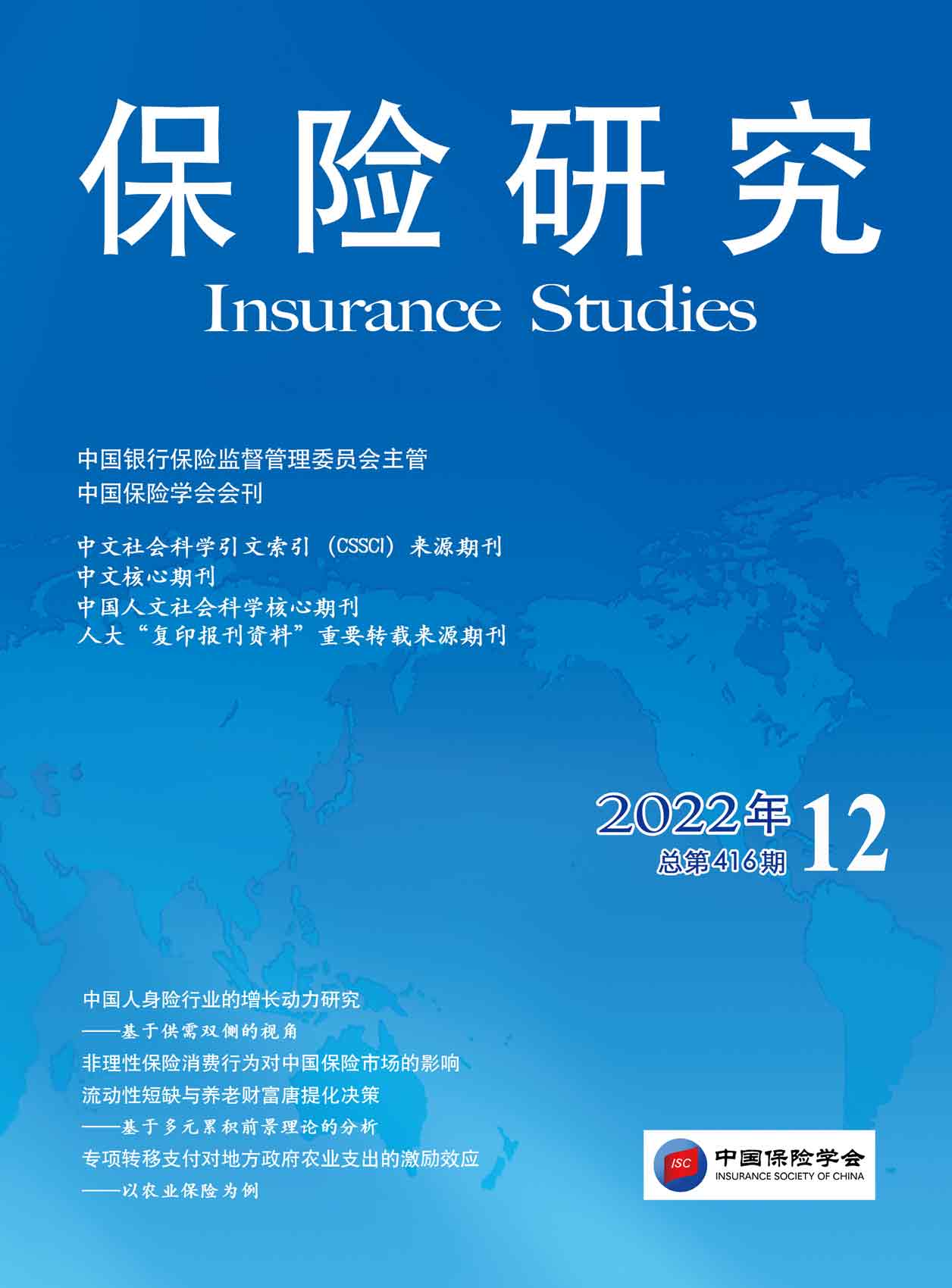
《保险研究》20221205-《生猪利润保险在生猪市场调控中的作用研究——以四川省为例》(李亚茹、张海浪)
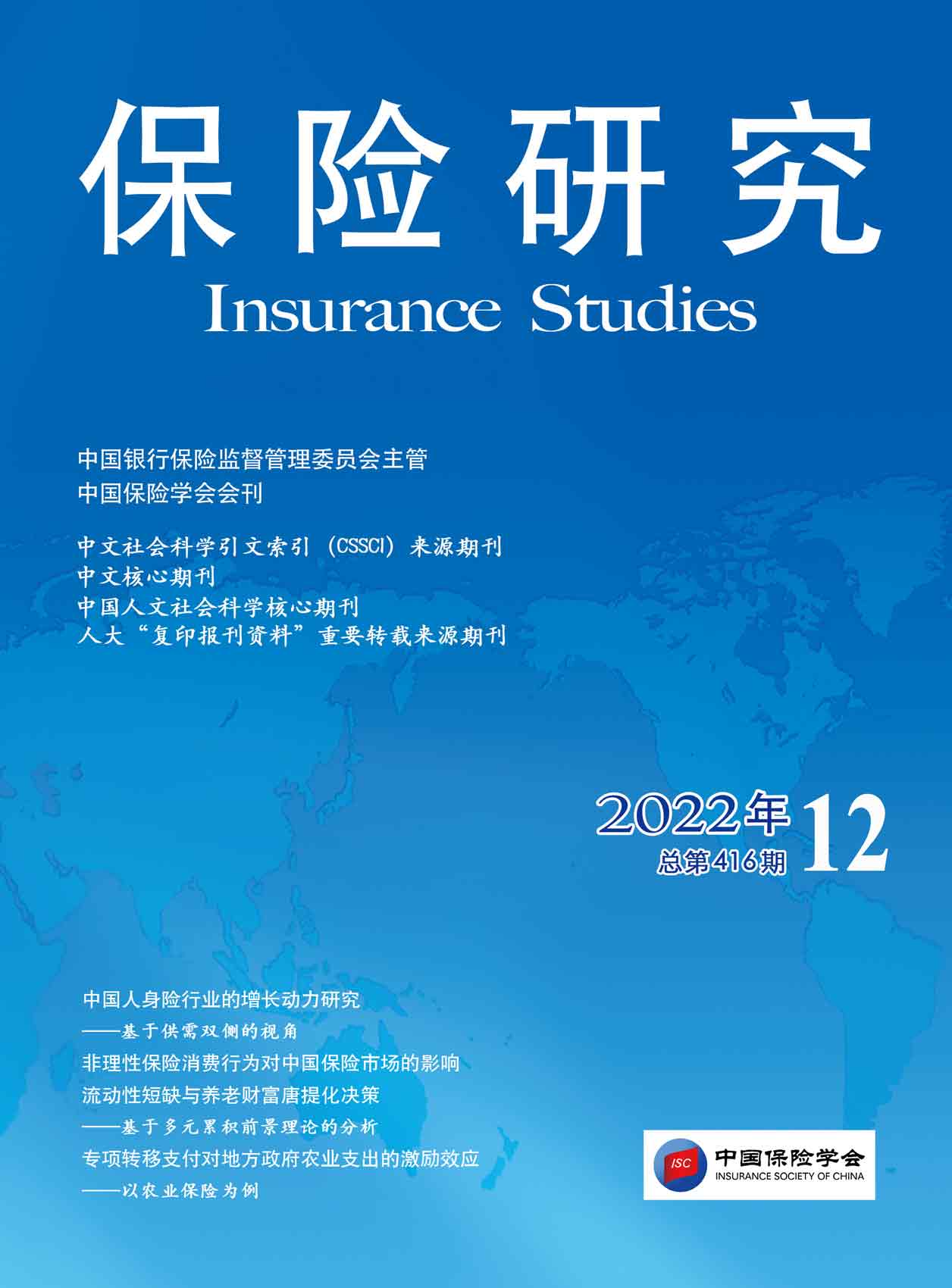
《保险研究》20221206-《主流机器学习方法识别车险欺诈效果的比较研究》(陈凯、李斌杰)
